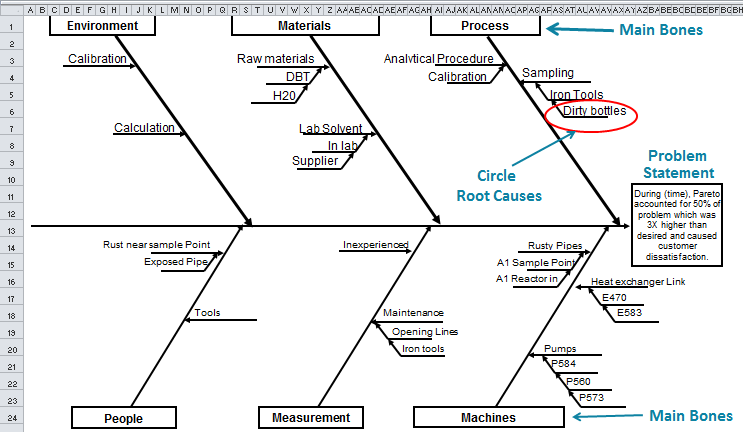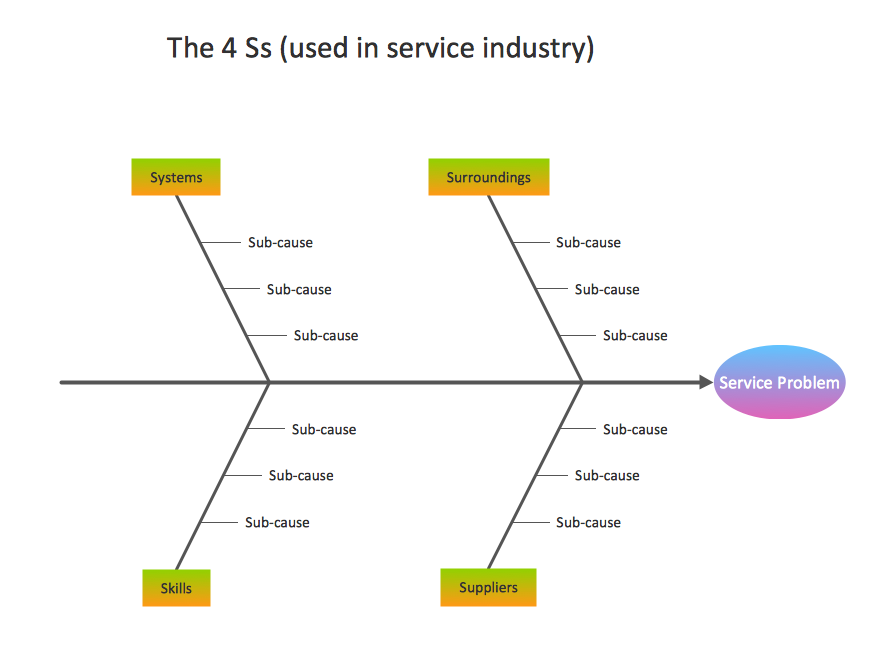How can we use the Ishikawa (Fishbone) Diagram in Software
Development. Here´s a summary.
Discover why Edraw is the simplest and easiest, yet most powerful ishikawa diagram maker: Download it Now. Download Windows Version Mac Version Linux Version Edraw ishikawa diagram maker is professionally designed to show causes of a certain event through visual diagrams.
Make Fishbone and Ishikawa Diagrams Online or On Your Desktop. Create a fishbone diagram in minutes on any device - online, Mac, or on your Windows desktop. SmartDraw makes it easy. Just open a fishbone template, add 'bones' to the diagram, and type in your information. It's that simple. Download a fishbone diagram here. The downloaded file is a MS Word document (.doc) file. The downloaded file is a MS Word document (.doc) file. This is a free and generic template customizable to suit one’s purpose.
Fish Bone Analysis For Root Cause Analysis in Software Testing
Very nice paper giving hands-on and step by step advice on how to do a root cause analysis using the Ishikawa diagram.
When to use Ishikawa diagram
- Focus attention on one specific issue or problem
- Focus the team on the causes, not the symptoms
Step by Step Guide to do an Ishikawa Analysis
Step 1 – Define Topic
- Identify and clearly define the outcome or effect to be analyzed
- An effect may be positive (an objective) or negative (a problem)
Focussing on a …
… positive effect —> focuses on a desired outcome —> fosters pride and ownership over productive areas
… negative effect —> can sidetrack the team into justifying why the problem occurred and placing blame
Step 2 – Draw the Fish
- Draw the fishbone and create the effect box
Step 3 – Major Branches
- Identify the main causes contributing to the effect being studied —> major branches
Step 4 – Sub-Brances
- For each major branch, identify other specific factors which may be the causes of the effect
Step 5 – 5 Why´s
- Identify more levels of causes using the 5 Why´s
Step 6 – Conclusion
Analyze the diagram:
- Use a Pareto Chart to prioritise potential causes.
- Look at the “balance”, repetition of causes, potential for consolidaton, quantification of effects.
Source: Fish Bone Analysis For Root Cause Analysis in Software Testing
Ishikawa Diagram in Software Development
How can we use the Ishikawa diagram in IT or Software Development? Here are a few resources than can help.
Examples
Source: Fishbone diagram for software defects
Source: How to apply cause and effect diagrams in IT and Software Development
Generic Branches
This article explains how the generic main branches (that we usually find in description)can be interpreted in a software project context: Method, Man, Management, Measurement, Material, Machine
Source: Ishikawa or Fishbone Diagram
Branches for Software Development
The generic branches will sometimes to fit our purposes. This articles suggests using specific sets for software development projects:

Varian 1:
On IT projects these are good starting points for causes (MVPS):
- Material (includes hardware and software)
- Vendors (such as hardware/software vendors)
- People (your team members, coworkers and other stakeholders)
- Systems (used to control and manage IT functions)
Variant 2:
For software development projects, this set of common causes is solid foundation to investigate (MCPS):
- Method (include software development life-cycle, QA process, agile methodology, SCRUM methodology, Waterfall)
- Code (the source code and related artifacts such as packages and libraries and frameworks)
- People (your team members, coworkers and other stakeholders)
- Systems (the systems used for development, releases, deployments, testing)
Source: How to apply cause and effect diagrams in IT and Software Development
Ishikawa for Risk Analysis
The Ishikawa diagram can also be used for risk assessment for example by Testing Experts or QA members.
We can use this tool to explore risks as well. We will explore what happens (cause) and how it will impact (effect) our project and product. In this regard this tool works also as a proactive exploration rather than the typical use of tracing problems that are already visible.
Source: Ishikawa (Fishbone) Diagrams And Risk Management
Source: Risk Assessment Using a Fishbone Diagram

See also: More Agile Testing by Janet Gregory and Lisa Cripsin
More
Synonyms: Cause and Effect Diagrams, Fishbone Diagrams, Ishikawa Diagrams, Herringbone Diagrams, and Fishikawa Diagrams
Ishikawa Diagram v.1.1
Ishikawa diagrams were proposed by Ishikawa in the 1960s, who pioneered quality management processes in the Kawasaki shipyards, and in the process became one of the founding fathers of modern management.
- Category: Business
- Developer: K KALEESWARAN - Download - Price: $2.99
RNSplicer v.0.54
RNSplicer is a tool that enables remote access to Bonjour services such as iPhoto libraries and iTunes music.
4.0 Gpa
- Category:
- Developer: Tomoo Mizukami - Download - Free
- ishikawa - nomi - graduate school - knowledge - information
Pasteboard Recorder v.1.07a
Pasteboard Recorder is an application to record a content of your pasteboard of Mac OS X automatically.
- Category:
- Developer: Tomoo Mizukami - Download - Free
- hokuriku - ishikawa - nomi - graduate school - knowledge